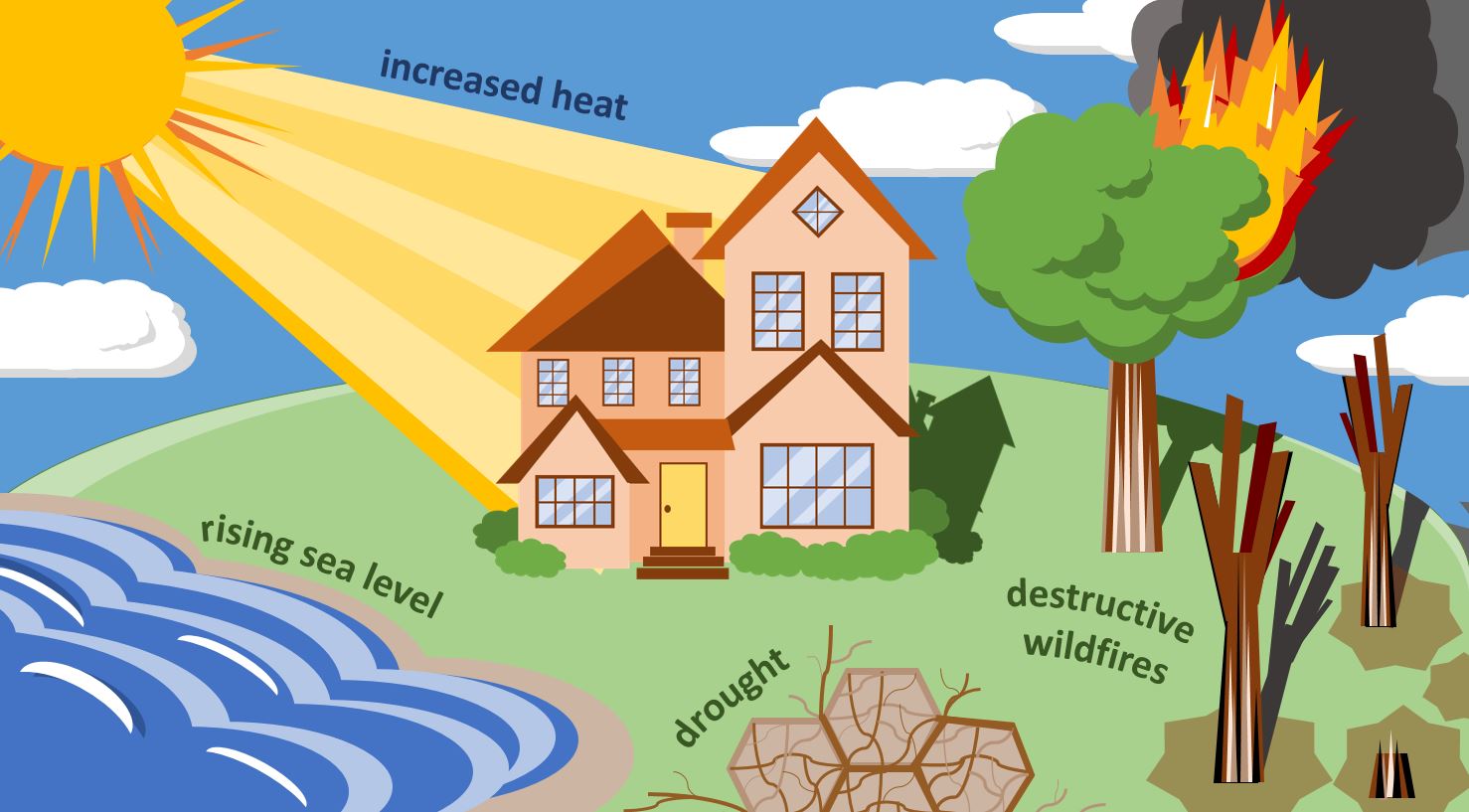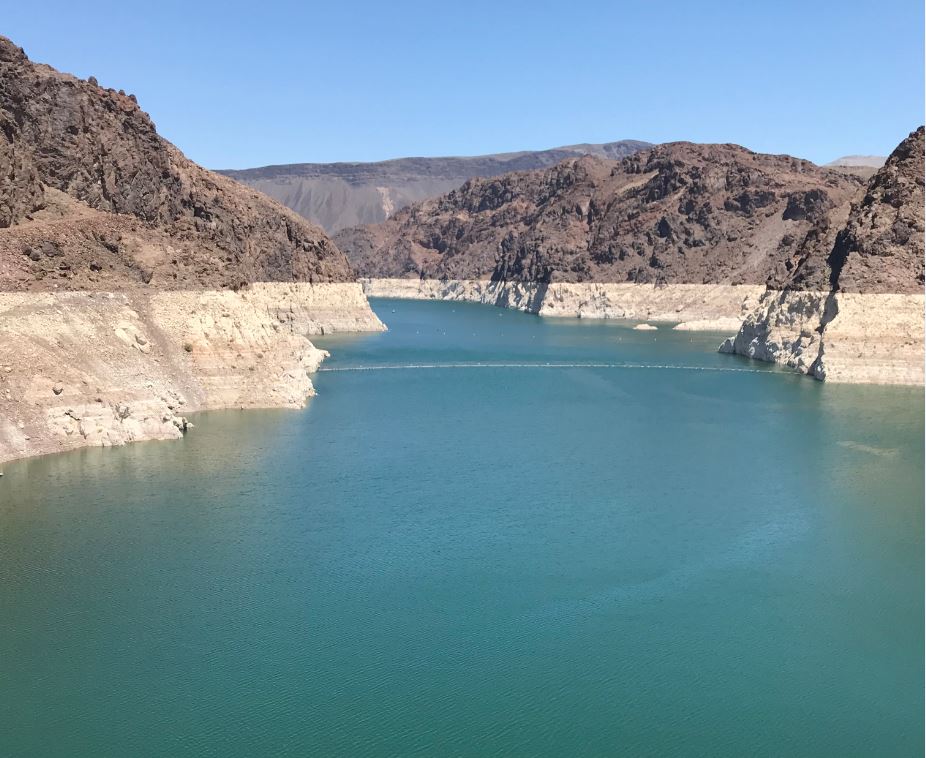It was while I was dreamily scrolling through the various listings of homes on RedFin that I noticed something out of the ordinary. Nestled right below the “Public Facts of 5 West Greenwood Place,” listing its 2 baths, 3 bedrooms, and spacious 1,220 square feet, the header read: “Climate Risk.” Underneath this header, the dropdown menu produced a staggering bar graph and the line “46 hot days (above 95 ℉) expected in 2050” strongly contrasted the just 8 days recorded per year between 1981 to 2005. I had to take a few hard blinks. I knew our planet was warming and, as a scientist, fully understood that regardless of how many times a shiny, slick-haired newscaster touted that “climate change is a hoax”, it is in fact real and, at this point, inevitable. It took those numbers staring me in the face behind my bright screen to fully appreciate how the change in our climate would directly affect where I chose to live, just as much as the distance to the airport, the proximity of the nearest grocery store, or the incidence rates of burglary and violent crime.

According to the WHO, over 1,700 heat-related deaths have been reported in Spain and Portugal this summer alone. One of the driving factors of the high mortality rate in Europe is the low abundance of air-conditioned homes. Only about 5% of homes in France and England have air conditioning (AC), and only 3% in Germany. Up to 30% of private residences in Spain have AC, but since the Russian invasion of Ukraine, Spain has restricted AC to reduce consumption of Russian gas, making the impact of these 21st century heat waves hit all the heavier. While public spaces in Europe often have AC, AC in private homes is much more scarce. Many Europeans see it as unnecessary and detrimental to the environment. And before recent history, Europe hasn’t been nearly hot enough to merit widespread AC usage.
Even the North Carolina Triangle itself isn’t spared from the fiery relentless heat. Since May 2022, Raleigh has already recorded over 10 days where the peak high ranged from 95-102℉. Just last year, Raleigh broke a nearly 100-year record for the highest recorded temperature in December (73℉). And NC winters have only gotten warmer, with a recorded 4℉ increase over the past 50 years.
Coupled with burning heat, wildfires have become disturbingly more commonplace. On a single day in July 2022, fires broke out across London and London’s Fire Brigade received 2,600 calls compared to their average 350 calls per day. One of the most devastating wildfires in recent history occurred in Australia between 2019-2020, which reduced more than 42 million acres of land to ash. Some researchers even argue that the Australian wildfire may have had more impact on the planet than COVID-19, with never-before-seen fire-started “pyrocumulonimbus” thunderclouds as strong as supercells and composed of ozone-piercing sulfur dioxide that billowed up to 19 miles tall and 600 miles wide. These clouds were so massive that they disrupted wind patterns in the stratosphere – a layer of the Earth’s atmosphere rarely influenced by events on the surface. One of these nicknamed “pyroCbs” even managed to take a whirlwind tour across the entire globe.
To add fuel to the fire, the frequency and intensity of hurricanes over the North Atlantic has also increased since the 1980s. This uptick in hurricanes is thought to be due to warmer temperatures at the sea’s surface coupled with the rising sea level. The NOAA has predicted an up to a 10% rise in the intensity of tropical cyclones, increasing the likelihood of the most destructive Category 4 and 5 storms. And as we’ve seen in recent years, there has also been a trend for these catastrophic storms to travel more northward along the Atlantic coast, making landfall more frequently in the mid-to-upper east states (including NC). There may be a small silver lining. Some studies suggest that while the intensity of storms will likely continue to increase, the overall frequency of storms may diminish over time.
But don’t let the promise of water-laden hurricanes fool you. While hurricanes may be on the rise, our planet is also facing unprecedented levels of drought. The Earth is made up of 70% water, but only 3% of it is potable freshwater. It is estimated that in 2025, just three years from now, two thirds of the world’s population will face water shortages of some kind. But water isn’t simply disappearing. The overall amount of freshwater on Earth from the Jurassic era to now hasn’t really changed thanks to regular atmospheric water cycling. What has changed is the demand for water. As the human population grows and grows, it requires more and more water. Water for drinking, bathing, and growing ever-expanding crops. With nearly 8 billion people inhabiting our planet, that makes for a lot of water. According to a 2015 report by the United States Environmental Protection Agency, the average American alone uses up to 82 gallons of water per day and the average American family wastes up to 180 gallons of water per week. These staggering statistics are also reflected in the water levels of the Colorado River, which stretches from Wyoming to Mexico and is the main water supply for seven Western states. The life-giving water of the Colorado River has reached historical lows. The Colorado feeds into Lake Powel and Lake Mead, the largest reservoirs in the West designed to store overflow water for recreation, power, and daily needs. The decline in available water can be seen on the reservoirs’ two-tone rocky walls, split between light and dark stone marking the original waterline. It is anticipated that by next year, the water levels in the Colorado and its reservoirs will be too low to generate hydropower to its surrounding cities.

Drying rivers and reservoirs aren’t just an American problem. As of August 2022, the Rhine River, a major artery for shipping goods that flows through Germany, has been reduced to just 30 cm or approximately 11 inches (compared to its 5ft average depth). This puts pressure not only on the need of water for drinking and bathing, but also puts strain on the economy as fewer cargo ships can travel inland and the amount of cargo the ships can carry becomes more restricted.
The list of dynamic and powerful climate changes goes on and on. The term “climate refugee” was an ominous phrase that piqued my interest years ago, but I did not fully appreciate the weight of the words. Now, I have become acutely aware of how the change in our global climate will affect how each of us conducts our lives and where we will choose (or are able) to live. There is no stable future that does not account for the growing changes to our climate. Our planet is transforming, whether we like it or not.
Peer Editors: Drake Philip and Nick Randolph